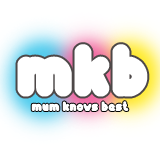In the UK, there are an estimated 60,000 children under 18 with epilepsy. Epilepsy can start at any age including childhood. If your child develops epilepsy you may have questions or concerns. This page aims to answer some of these questions and gives a brief introduction to how epilepsy can affect children. It also includes specific information about education for parents and teachers.
What is epilepsy?
Epilepsy is a neurological condition (affecting the brain and nervous system) where a person has a tendency to have seizures that start in the brain.
The brain is made up of millions of nerve cells that use electrical signals to control the body’s functions, senses and thoughts. If the signals are disrupted, the person may have an epileptic seizure (sometimes called a ‘fit’ or ‘attack’).
Not all seizures are epileptic. Other conditions that can look like epilepsy include fainting (syncope) due to a drop in blood pressure, and febrile convulsions due to a sudden rise in body temperature when a young child is ill. These are not epileptic seizures because they are not caused by disrupted brain activity.What happens during a seizure?
There are many different types of epileptic seizure. The type of epileptic seizure someone has depends on which area of their brain is affected.
There are two main types of seizure: focal seizures (sometimes called partial seizures) and generalised seizures. Focal seizures affect only one side of the brain and generalised seizures affect both sides of the brain. Generally, adults and children have the same types of seizure, although some may be more common in childhood than adulthood.
Different seizures include:
- jerking of the body (convulsions);
- repetitive movements;
- blank moments when the child is briefly unconscious; and
- unusual sensations, such as a strange taste in the mouth or a strange smell, or a rising feeling in the stomach.
In some types of seizure, a child may be aware of what is happening. In other types, a child will be unconscious and have no memory of the seizure afterwards.
Some seizures are more common in childhood. For example, absence seizures which can be very brief and are often mistaken for 'daydreaming' or not paying attention.
Some children may have seizures when they are sleeping (sometimes called 'asleep' or 'nocturnal' seizures). Seizures during sleep can affect sleep patterns and may leave a child feeling tired and confused the next day.
Some children develop epilepsy as a result of their brain being injured in some way. This could be due to a severe head injury; difficulties at birth; or an infection which affects the brain such as meningitis. Epilepsy with a known structural cause like this is called symptomatic epilepsy.
For some children, their epilepsy has a genetic cause. This may be inherited from one or both parents, or it may be a change that happened in the child's genes (before they were born). Epilepsy with a likely genetic cause is called idiopathic epilepsy.
Everyone has a level of resistance to seizures, called a seizure threshold. This is included in the genes passed from parent to child. A child with a low seizure threshold may start having seizures for no obvious reason. However having a low seizure threshold doesn't always mean that seizures will start.
Other children in the family may have a similar seizure threshold but may not develop epilepsy
How is epilepsy diagnosed?Other children in the family may have a similar seizure threshold but may not develop epilepsy
A diagnosis of epilepsy may be considered id your child had had more than one seizure. The GP will will usually refer them to a paediatrician (a doctor who specialises in treating children). You (and your child if they can) may be asked to describe in detail what happened before, during and after the seizure.
Having a video recording of the seizure can help the paediatrician understand what is happening.
The paediatrician may also suggest a few tests to help with the diagnosis. These tests alone cannot confirm or rule out epilepsy, but they can give extra information to help find out why your child is having seizures.
Websites for advice and support:
http://www.epilepsysociety.org.uk/
http://www.epilepsy.org.uk/info/syndromes/childhood-absence-epilepsy
http://www.patient.co.uk/doctor/Epilepsy-in-Children-and-Young-People.htm

No comments:
Post a Comment